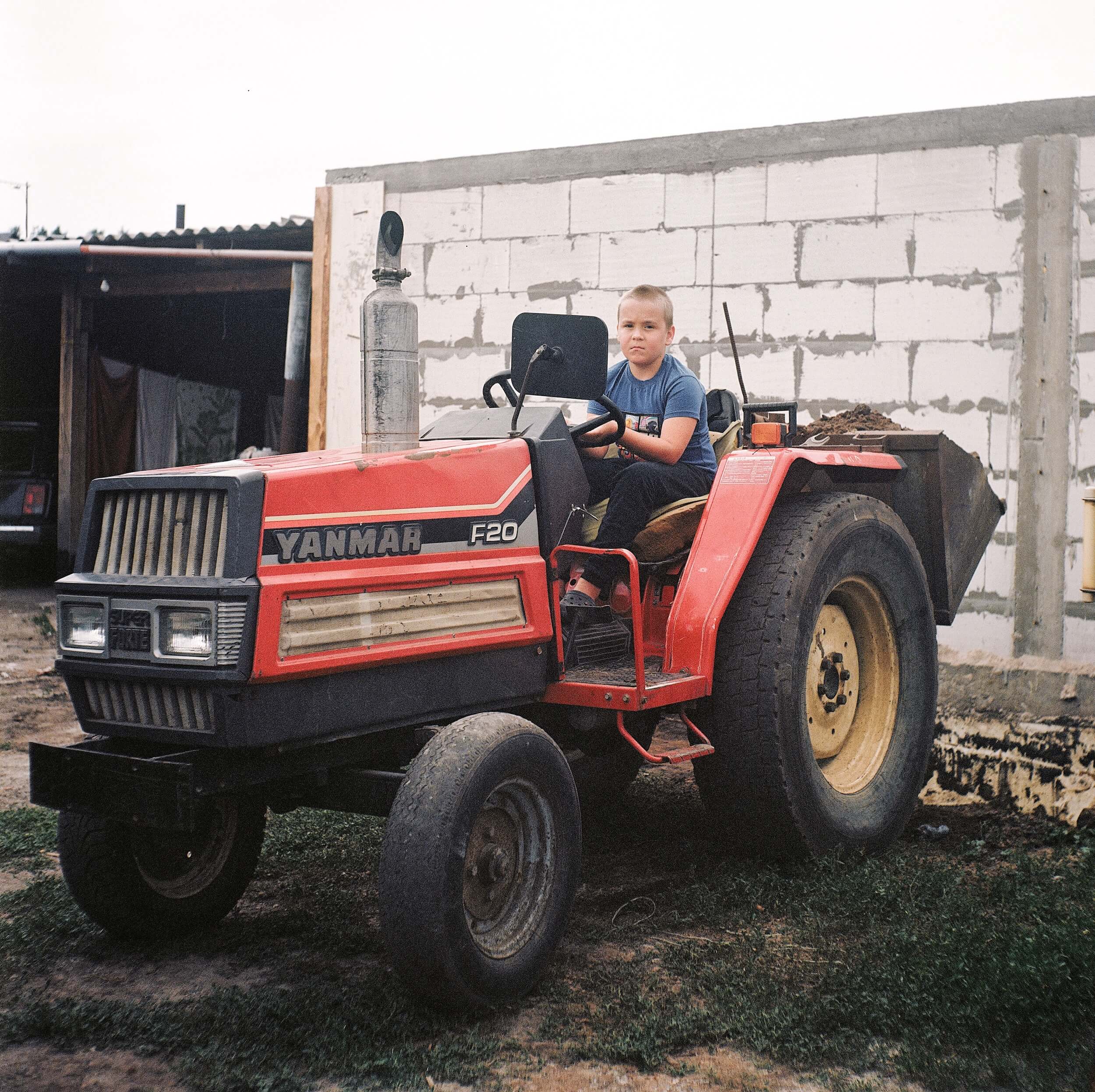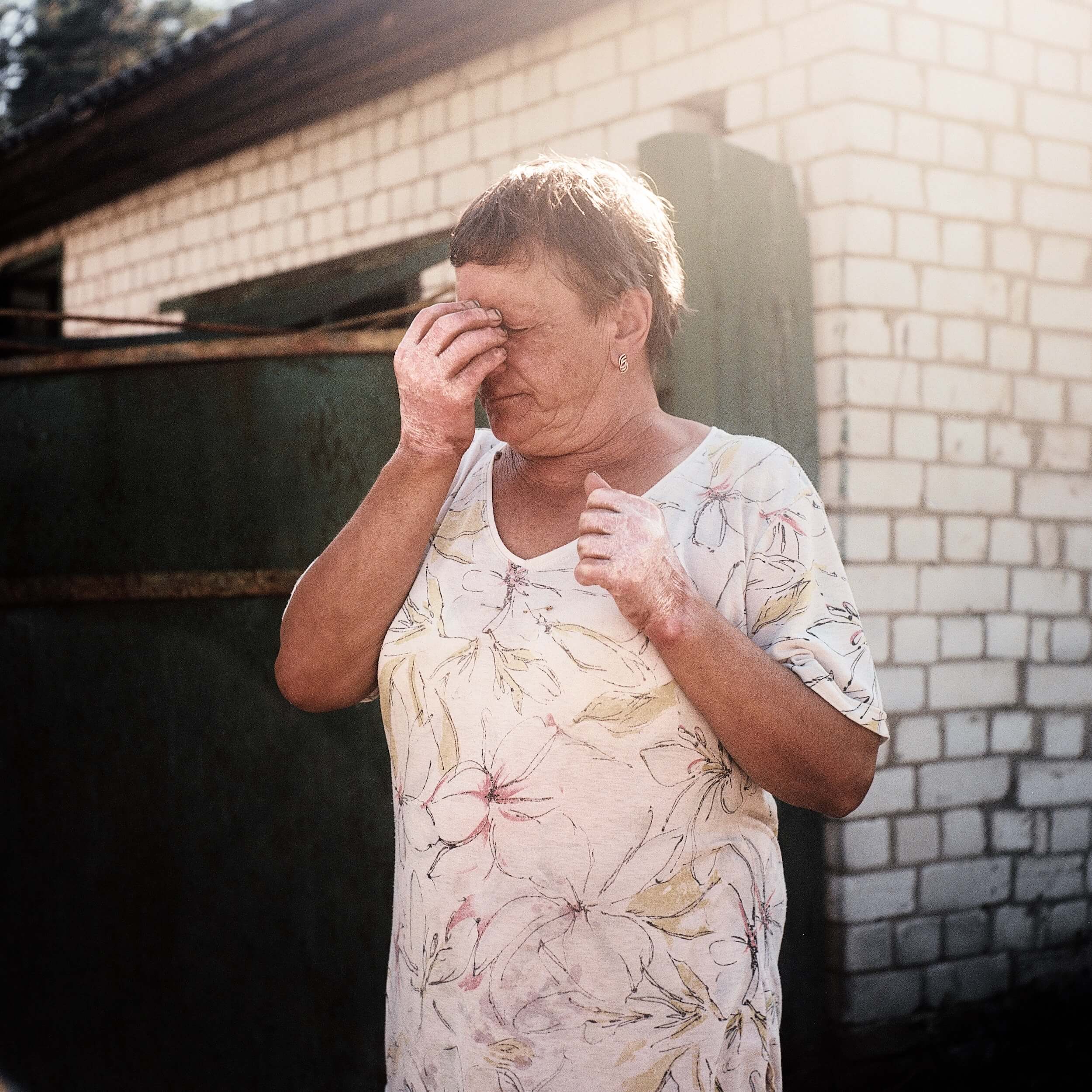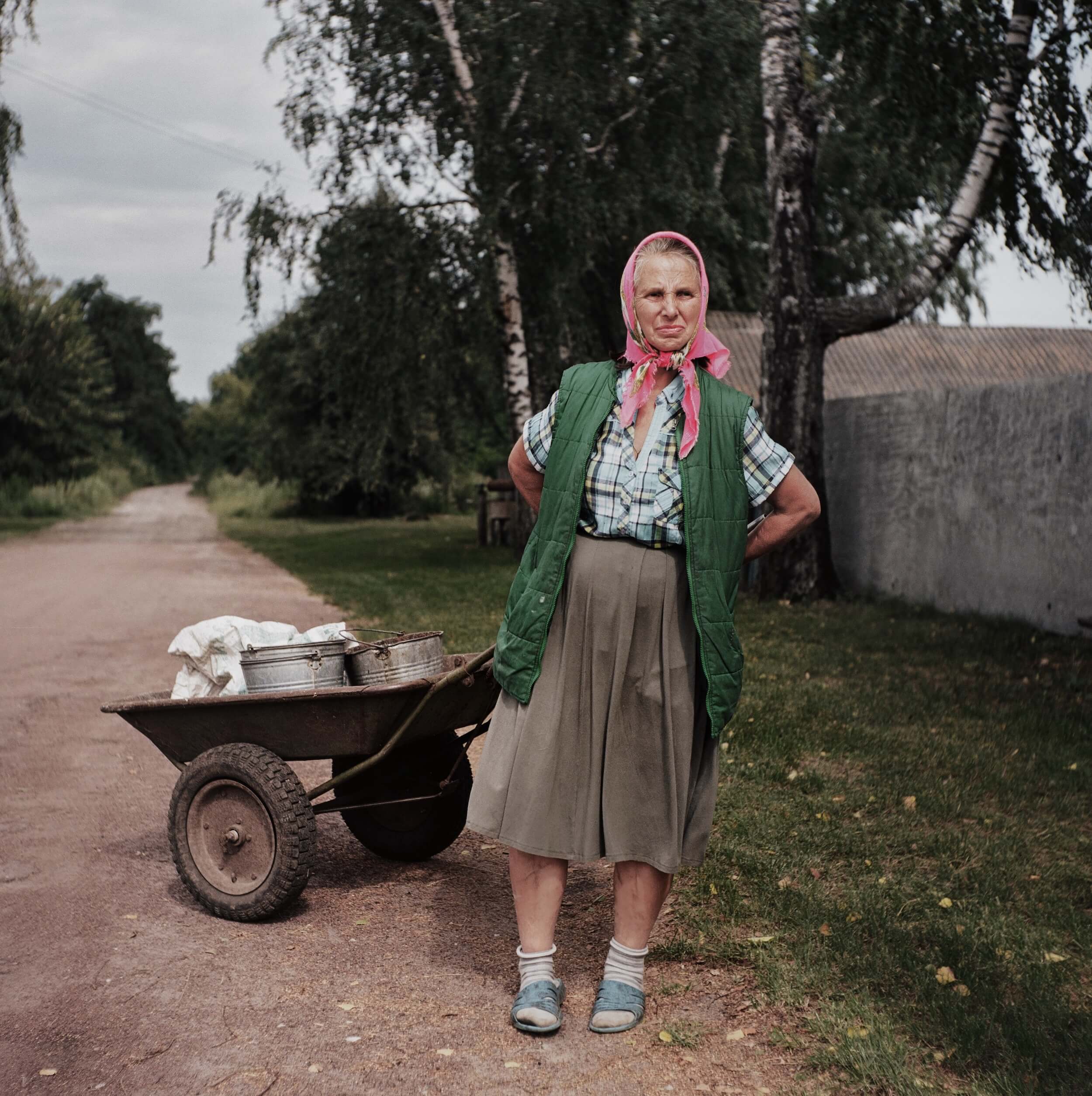
“We Named the Puppy Hope”: Life in the Liberated Kyiv and Chernihiv Regions

A photographer. A Burn My Eye collective member, works with the documentary photography. Her works were exhibited in US, Europe and Ukraine. She now lives and works in Kyiv.
— Everyone in these pictures survived the occupation in their communities: they did not have time to go or did not believe that their village could be of interest to the russians. I usually meet these people by chance on the street – now the lines have been blurred in communication and anyone can talk to anyone. Most of the photos were taken during our conversations. Sometimes it seems to me that it were the characters who chose me, not vice versa. All of them and their stories are different, but each one wanted to give me something as a souvenir: sunflower seeds, flowers from the garden, fruit – whatever they have. And I, in turn, ask how I can help them.
With the beginning of the war, my photographing style did not change, because I always tried to use different approaches and tools in working on series. But I definitely realized what responsibility a photographer bears from an ethical point of view, and how important it is to realize that you will be associated with your work.
It seems to me that photography is one of the few forms of art that can exist without a viewer. That is, I am not looking for any special objects to impress the observer. It is enough for me that this person and his or her story became important to me – the very fact of our meeting.
Photography is one of the few forms of art that can exist without an audience.
The whole world can virtually online witness this war, the russian genocide in Ukraine. Everything is documented, as everyone has a camera in his pocket, but a photographer can intensify this documentation on several levels. Philosopher Theodor Adorno once raised an important question: Is art possible after Auschwitz? Time put everything in its place. I think everyone should do what he or she can.
Almost any work now will have a military context. Recently, I photographed young people at a charity concert and took one of the girl’s portraits near a window covered in wrap. It took me several minutes to realize that this window was broken during a missile attack on Kyiv. We have changed a lot, the war has so permeated our lives at all levels that we ourselves have already become its scars.

Bogdan, city of Bucha
During the bombardment, he and his family hid in the basement at his house. They fell asleep there, and for some time they could not get out. When they finally did, they saw that only the foundation and a few walls remained of their house.

Dmytro, Borodyanka village.
This guy was holding a Christian event for children on the central square in Borodyanka. He asked to take his picture, but, unfortunately, I lost his phone number. Perhaps he will find himself here.

Halyna, Yagidne village, Chernihiv region.
She survived the occupation in the school basement.

Mykhailo, Yagidne village, Chernihiv region.
Right in front of his house there was a base of russian artillery. He told how people in the basement tied themselves to the walls to get some sleep. Immediately after the liberation of the village, he began to work in the garden, he says that winter is coming. But, like every resident of Chernihiv Oblast, he is most afraid that the russians will try to occupy their village again. When leaving, I told him, “Let's live and see, everything will be fine”. To which Mykhailo replied: “There is no doubt in that! I want to live!”.

Nadia, Lukashivka village, Chernihiv region.
She cooks the most delicious dumplings for volunteers. During the Russian occupation, 17 people were hiding in her basement. Her eldest grandson was about to be shot by the russians, but she managed to save him. After that, the russians prohibited the men to leave the basement. They placed the IFV in the yard of Nadia's house and occupied the second basement. Her aunt lived with her, but she did not have the strength to get to the basement, so she stayed in the house. During the shelling, Nadia sat with her and prayed.

Artem and Fadei, Lukashivka village, Chernihiv region.
Artem is Nadia's grandson. The boys survived the russian occupation. Now they set up their checkpoint at the place where there was the russian military trench. The boys collect fragments of shells, weapons and ammunition, and keep their findings at an improvised checkpoint.

Bohdan, Moschun village.
He helps his parents to clean up and reconstruct the territory after the russian invasion.

Dmytro, Moschun village.
He and his wife were evacuated from the village. But his brother refused to leave, and in mid-March he died in the basement of his own house. Dmytro's house was also completely destroyed, now he lives in a small building with no windows on the premises of the church in his native Moschun.

The woman went out on the balcony to shake off the dust from the rug. She lives in a partially destroyed multi-story building in the city of Borodyanka. Her apartment has no windows and no water supply.

Maria Makarivna, Lukashivka village, Chernihiv region.
She is 96 years old, she is the oldest village resident, who has lived through the second occupation in her life. She remembered the times of the Second World War, when Lukashivka was occupied by the Germans. According to her, at that time, not a single house in the village was bombed. During the month of occupation, the russians brought her only a single loaf of bread, but she refused to eat it. Maria Makarivna says that she may not survive the third occupation.

A woman and her partially destroyed house. Her basement was occupied by the Russians, so during the occupation she lived in a neighbour's basement. She says that the russians "freed" her from her happy retirement and home.

Oleksandra, Lukashivka village, Chernihiv region.
A woman stands on the threshold of her destroyed house. During the occupation, the russians occupied her basement and kept Oleksandra there, next to them, inside. She was allowed outside only for a few times a day. The russians ate her cattle and preservatives. Oleksandra's house, barn and all her possessions were destroyed. She remembered that when she went to the toilet, she saw the Armed Forces in the field and was very happy when she saw the position of our troops not far from the village. Now she lives with Tamara's neighbour.

Svitlana Ivanivna, Lukashivka village, Chernihiv region.
A woman stands outside her basement. During the occupation, fellow villager Svitlana gave birth there.

Tamara Borysivna, Yagidne village, Chernihiv region.
She was in her house at the time of the explosion. Due to the fact that she was wearing several jackets, her body was mostly untouched, only her hands were burnt. The house burned down, now she lives with her dog Laiko in a small shed.

Petro, Yagidne village, Chernihiv region.
Petro's house is located next to the school, in the basement of which the villagers were held hostage. He recalled how, in the first days of the occupation, a Russian soldier entered his house and started shoving wood into the oven to start a fire: he did not know how to use a gas stove. Later, Petro was also taken to the basement. Not a single building on his territory stayed intact.

Volodymyr Petrovych, city of Irpin.
He faced a full-scale invasion in Irpin. At the beginning of March, the Ukrainian military came to him and told him that he and his family had to leave the house immediately. They also helped with the evacuation. Thanks to this, his whole family survived. On returning, they found their house completely destroyed.

Svitlana Ivanivna, village of Gorenka.
Behind her is the house where she lived. Her apartment is located on the fifth floor.

Olena, Sloboda village, Chernihiv region.
She is carrying new windows delivered by volunteers on a cart. Olena was very happy that she would be able to replace the broken windows in the house where she currently lives before the onset of cold weather. Her house is partially destroyed.

Natalia, Sloboda village, Chernihiv region.
She is originally from Belarus, but many years ago she bought a house in Sloboda and stayed in Ukraine. She survived the russian occupation.

Valentyna, Yagidne village, Chernihiv region.
She tells the volunteers helping her with construction and cleaning about the horrors of the war and the russian occupation she lived through. She, along with all the villagers, was kept in a small school basement for a month. She remembers how there was not enough air, it was literally impossible to breathe.

A man with a puppy, the village of Gorenka.
Behind them is a destroyed five-story building. The puppy was named Nadiya (Hope).
New and best








